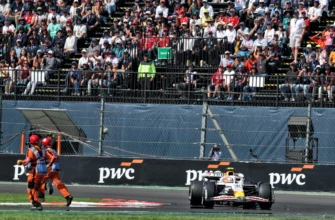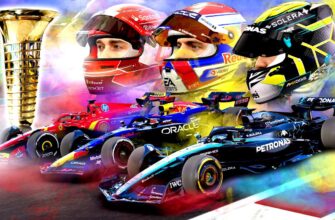In the evolving world of professional tennis, debates are as common as aces on a fast serve. From the relentless tournament calendar to the ever-changing equipment, players and pundits alike frequently voice their opinions. The latest, and perhaps most intriguing, salvo comes from none other than world No. 3, Alexander Zverev, who has reignited a long-simmering discussion: are tennis court surfaces losing their unique identities, and if so, to whose benefit?
The Players` Lament: A Cry for Diversity
Zverev`s recent comments from the Shanghai Masters 1000 were direct and delivered with the conviction of a player who believes he’s identified a significant shift in the game. “I hate it when the court speed is the same everywhere,” he declared, adding a provocative twist. “I know tournament directors are moving in this direction because, obviously, they want Sinner and Alcaraz to win every tournament.”
This isn`t an isolated complaint. Just days prior, tennis legend Roger Federer, speaking on Andy Roddick’s podcast, echoed similar sentiments, lamenting the homogenization of surfaces. For players who grew up mastering distinct conditions – the slow grind of clay, the unpredictable bounce of grass, the consistent pace of hard courts – this perceived shift represents a fundamental change in the sport’s fabric.
A Trip Down Memory Lane: When Surfaces Mattered Most
There was a time when a tennis player`s career trajectory was often dictated by their preferred surface. Clay-court specialists might dominate Roland Garros but struggle at Wimbledon. Serve-and-volley maestros thrived on grass, while their baselining counterparts found success on hard courts. This diversity wasn`t just a quirk; it was an integral part of the game`s strategy, requiring players to possess a broader range of skills or specialize intensely.
Zverev harks back to this era, asserting, “We always had different surfaces; you couldn`t play the same tennis in the same way on grass, hard, and clay courts. Today, you can play almost the same way on every surface.” The implication is clear: modern courts, perhaps subtly tweaked for consistency and longer rallies, are eroding the distinct tactical challenges that once defined the sport.
The Green-Eyed Monster? Examining Zverev`s Critique
While Zverev`s observation about surface consistency holds historical weight, its timing raises a few eyebrows. Currently ranked world No. 3, but significantly behind the dominant Sinner and Alcaraz in performance this year, his remarks could easily be viewed through the lens of frustration. After all, a player who finds himself struggling against the very athletes he claims are being favored might be perceived as having a case of the proverbial “sour grapes.”
One might wonder why this particular grievance surfaced now, especially considering Zverev’s own successful run to world No. 2 just a year prior, which included multiple Grand Slam finals. Was the homogeneity less bothersome when he was frequently on the winning side? It`s a question that, while perhaps unfair, inevitably enters the public discourse when a player’s performance doesn’t quite match his outspoken critique of the game’s infrastructure.
Sinner`s Pragmatic Counter: Just Play the Game
Amidst Zverev`s pointed remarks, Jannik Sinner offered a refreshingly grounded perspective. His response was succinct and detached from any hint of personal implication:
“It`s not me and Carlos who make the courts. It`s not our decision. We try to adapt in every situation. I feel that anyway every week the surface is a bit different. I played great tennis even when the courts were faster. But I`m not the one making the courts, I just try to play the best tennis possible.”
Sinner`s reply underscores the professional athlete`s primary directive: adapt and perform. It highlights a key difference in perspective – while some players lament external factors, others simply focus on mastering whatever conditions are presented to them.
Beyond the Bounce: The Broader Implications for Tennis
The debate over surface uniformity extends beyond individual player complaints. It touches upon the very direction of professional tennis. Tournament directors, it`s argued, have commercial incentives to ensure star players advance and matches are entertaining. Longer rallies, consistent bounces, and fewer unpredictable outcomes (like an early exit for a top seed on an unfamiliar surface) can be seen as beneficial for viewership and sponsorship.
Moreover, modern tennis isn`t just about court surfaces. Advancements in racquet technology, string materials, and intense physical conditioning have all contributed to a game where power and consistency are paramount. Players hit harder, move faster, and recover quicker than ever before. This evolution, combined with potentially more uniform court speeds, naturally favors a style of play that might appear adaptable across various “types” of courts.
As Novak Djokovic, another vocal proponent of change (particularly regarding the crowded calendar), recently noted about player complaints: “Many complain, but no one does anything when needed.” The same might be said for surfaces. The issue is real, it`s discussed, but concrete action to reverse the trend of homogenization remains elusive, perhaps because the current status quo, for all its perceived drawbacks, delivers compelling drama centered around its biggest stars.
Ultimately, whether modern tennis courts are truly “all the same” is a nuanced question. What is undeniable is that the discussion points to a deeper tension within the sport: the balance between preserving historical diversity and embracing an evolved, arguably more athletic, future.







